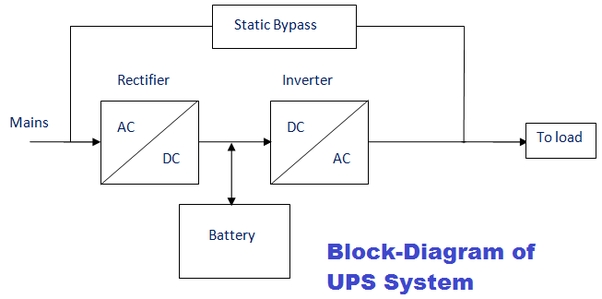

What are the 4 main parts of a UPS power supply?
There are four main parts of an uninterruptible power supply: rectifier, inverter, battery, and static bypass switch.

Rectifier: The rectifier is a device used to change the input power from AC (Alternating Current) to DC (Direct Current) and recharge the battery.
Inverter: The inverter switches the DC voltage from the rectifier or battery back to an AC output that powers the critical load.
Static Bypass switches: Static Bypass switches are used to bypass the UPS normal operation, in cases of high inrush or fault conditions. For example, In the event of a UPS fault, the static bypass switch connects the load to the mains supply, bypassing the rectifier, batteries, and inverter.
Battery:The batteries in a UPS system provide emergency power when the mains supply fails. Either the rectifier or a separate charger ensures that the batteries are always charged.
UPS battery systems have at least one string of batteries, with the number of batteries required depending on the DC voltage of the UPS. Batteries within a string are connected in series, so if a single battery fails, so too does the entire string.
For smaller UPS systems, the batteries are often internal to the unit. whereas in larger solutions, UPS batteries are often housed in battery cabinets.
lead-acid (LA) batteries are currently the most common UPS battery. In specific instances with special requirements, nickel-cadmium or lithium-ion batteries are sometimes used.
